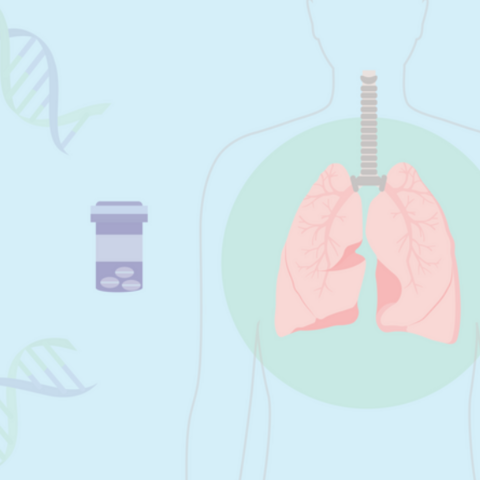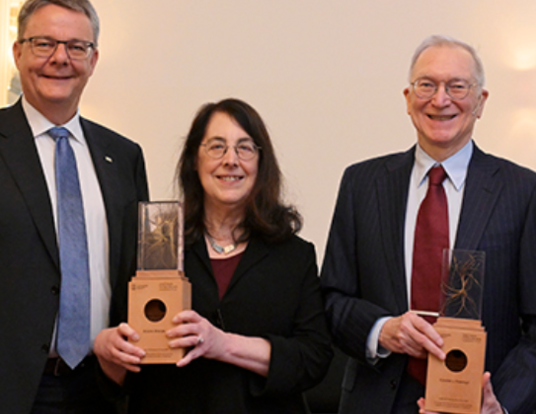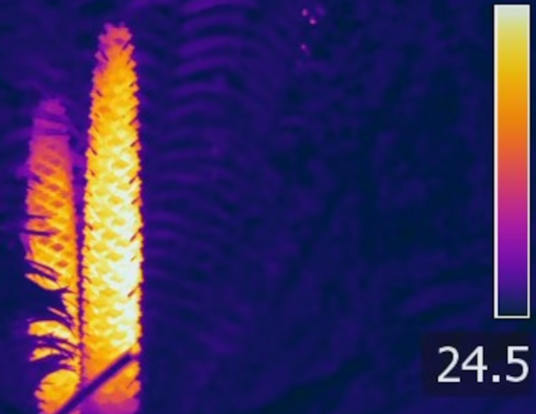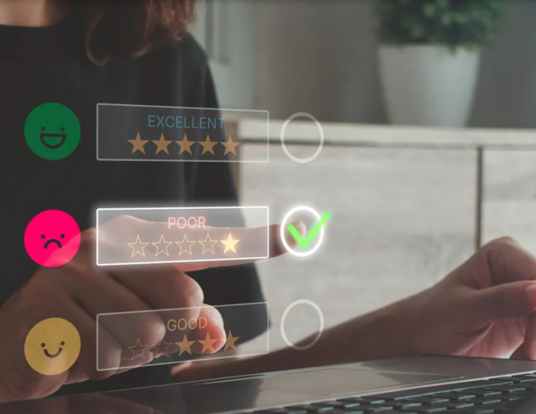Truth, Reparation, and Moving Forward
Implementing the recommendations of the report on Harvard & the Legacy of Slavery
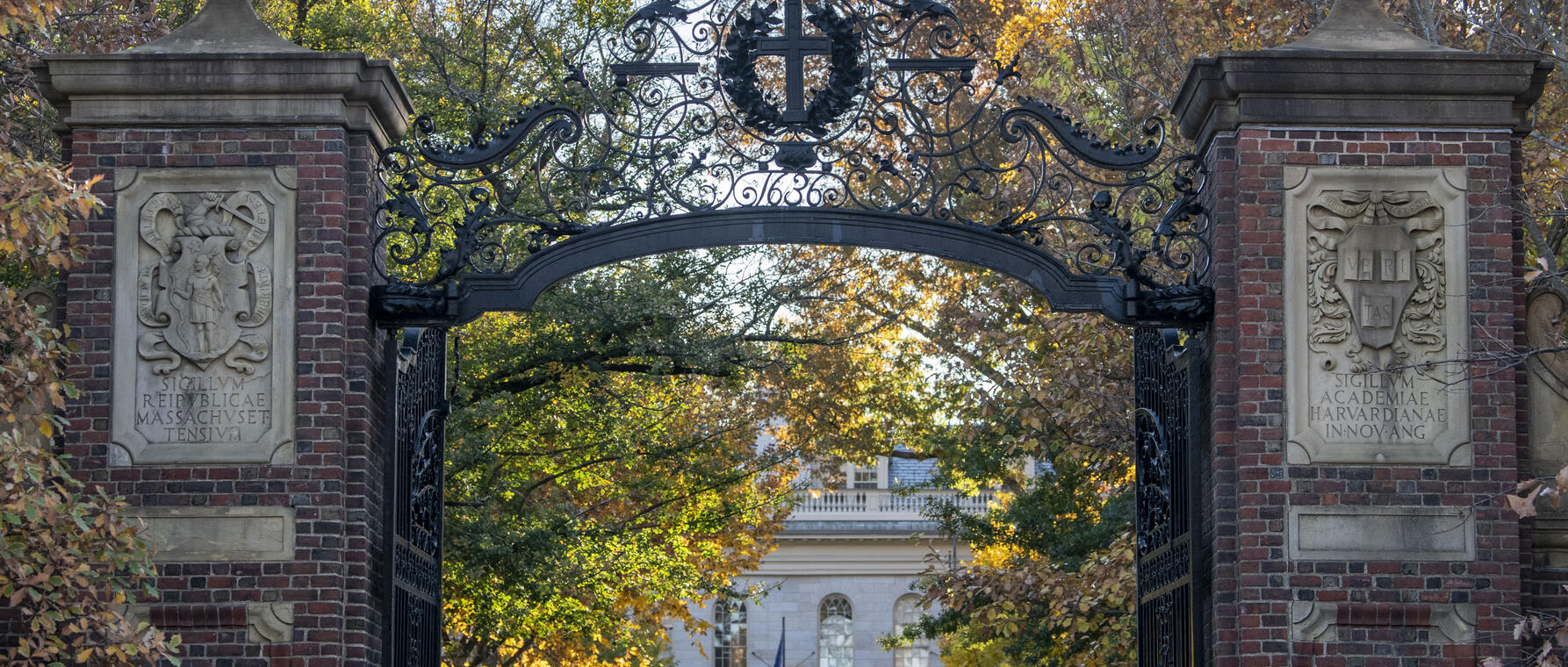
Research at Risk: Since World War II, universities have worked with the federal government to create an innovation ecosystem that has yielded life-changing progress. Now much of that work may be halted as funding is withdrawn. Find out more about the threats to medical, engineering, and scientific research, as well as how Harvard is fighting to preserve this work—and the University's core values.
In April 2022, a group of leaders from across Harvard University appointed by then Harvard President Lawrence S. Bacow released the Report of the Presidential Committee on Harvard & the Legacy of Slavery. Building on years of groundbreaking research, the report documented the “incontestable truths” that "During the 17th and 18th centuries . . . Harvard leaders, faculty, staff, and benefactors enslaved people, some of whom labored at the University; accrued wealth through the slave trade and slave labor; and defended the institution of slavery.” Based on its findings, the committee made seven recommendations to the University’s president and fellows “to remedy the persistent educational and social harms” of slavery to the campus and surrounding communities and to the direct descendants of those enslaved at Harvard.
Leading the effort to implement these recommendations is Sara Bleich, PhD ’07, the inaugural vice provost for special projects and a professor of public health policy at the Harvard T.H. Chan School. In the following interview, Bleich discusses the initiative’s areas of focus, its successes, and the special role that Harvard Griffin GSAS can play in addressing the legacy of slavery at the University.
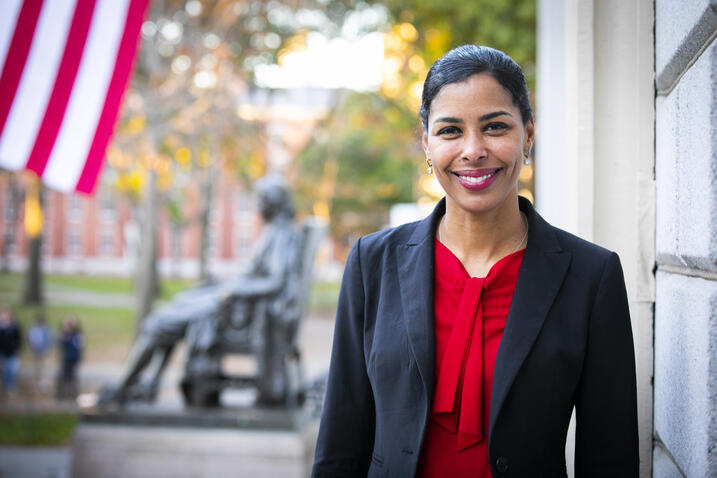
How does the mission of H&LS flow from the University's motto, Veritas?
Veritas means “truth.” The mission of Harvard & the Legacy of Slavery (H&LS) Initiative is to tell the truth and repair harm by advancing meaningful change grounded in the University’s educational mission and guided by the recommendations and findings from the Presidential Committee on Harvard & the Legacy of Slavery. We believe that if we hold Harvard accountable for contributing to and benefiting from slavery, then we will be able to have a meaningful impact on those who have directly or indirectly suffered from slavery-related harms through reparative efforts. That’s the truth we pursue every day; it’s what grounds us in our work.
What does it mean to hold Harvard accountable?
There are two parts to this work. Part one was detailing how the University benefited from and contributed to slavery. That was done by the Report of the Presidential Committee on Harvard & the Legacy of Slavery. Part two is reparative action through the implementation of the seven recommendations in the report. That work has been going on for over two years now.
The animating principle behind the report is that the corrosive legacy of slavery continues to influence nearly every facet of life in our society. How so?
If you look around, what you see is evidence of slavery's long shadow across the nation. If you look at Black populations, what you can see pretty plainly is that those groups have less wealth, less health, less access to education, less freedom, and they have shorter lifespans than their white peers. The same can be said for Indigenous people.
How does H&LS hope to address that legacy?
There are five main areas of focus. The first is actively telling the story of this work, to raise awareness, build trust, and inspire others. Some people know a lot about H&LS but more know little or nothing. We want folks to be aware that the presidential report exists, what its recommendations are, and that we’re working to implement them.
Second, we want to build trust and inform our work by engaging communities inside and outside the University. In the months ahead, we’ll talk publicly about the progress we've made over the past two years and get perspectives from key stakeholders. We'll host community conversations and share a community update—essentially a summary of our progress thus far.
Third, we want to embed H&LS into the University's DNA and make sure it’s part of day-to-day operations. Some examples include the ninety-minute Legacy of Slavery at Harvard tour offered a couple of times a week in the fall and spring. To date, we've had over five hundred people from inside and outside the University experience the tour and learn in a more intimate way about how Harvard was entangled in slavery. We also have a film that describes the main findings of the report. We’re doing a lot of work with Schools and units to push that out and many individual faculty members have integrated the report or the film into their coursework. We are also working with VPAL to launch a flagship course focused on public engagement in history.
Fourth, we’re pursuing new and deeper partnerships, which is central to how we define our work. For example, last year we launched the Reparative Partnership Grant Program which focused on Boston and Cambridge and will continue this year. It allows community organizations to identify the most important areas of focus so we can fund them. A couple of unique aspects of that program are that projects have to be led by a community group and a Harvard partner and that, if funded, 60 percent of the award has to leave the University and go to that community group.
Lastly, we are partnering with research organizations like American Ancestors to meticulously identify the direct descendants of those enslaved at Harvard.
What are some of the initiative’s successes so far?
We have had a lot of progress working with historically Black colleges and universities (HBCUs)—one of the H&LS report’s recommendations. For instance, this past summer, we launched the Du Bois Scholars Program—named after Harvard Griffin GSAS’s first Black PhD alumnus—which brought an inaugural cohort of students from HBCUs to campus for nine weeks as part of the Harvard summer undergraduate research village. The students worked with faculty mentors for that whole time, conducting research that ranged from bench science to health policy, and then presented their results at the program’s end. They were an amazing group, not only as researchers but also in demonstrating the excellence that comes from HBCUs.
This fall, FAS will be launching the Dean’s Visiting Professor program, where faculty from HBCUs come to Harvard for a year or semester-long sabbatical to do research and engage with the Harvard community. We're also collaborating with Clark Atlanta University’s Executive Leadership Institute to offer professional development for new HBCU presidents. Lastly, we partnered with the Harvard Business School on a program to teach HBCU faculty members how to teach using cases.
You’ve mentioned the recommendations of the presidential report. One of them was to leverage Harvard’s excellence in research and education to advance opportunities in the communities around the University—and beyond. Harvard Griffin GSAS's mission is to shape visionary scholars, innovative educators, and creative leaders. Broadly speaking, how do these two intersect? Does its mission give Harvard Griffin GSAS a special role to play in H&LS’s effort?
Absolutely. The Du Bois Scholars program just had 20 scholars from 12 HBCUs here over the summer to work with faculty from four different schools and even a staff member at the library. This is research that might get them interested in pursuing a PhD later in their careers. Many of them were very excited about that possibility. Part of the mission of Harvard Griffin GSAS is to instill and mobilize the work of H&LS across the university by inspiring this research.
We have also had the opportunity to work with the School on screening the film about H&LS. We've encouraged them to get students to come on the tour and find ways to partner with us on truth-telling and repair. Many Harvard Griffin GSAS students are currently exploring important questions around the legacy of slavery, specifically in the context of structural racism, or thinking about broader issues around the relationship between health and race. Some have gotten financial support from the Harvard & the Legacy of Slavery Student Grant Program. These efforts contribute to the evidence base H&LS brings to its work.
Outside of strengthening the pipeline for PhDs and the research our students are doing, are there other ways H&LS is working with Harvard Griffin GSAS to implement the presidential report's recommendations?
Yes. We’ve worked with Harvard Griffin GSAS’s Office of Student Services to offer the H&LS tour to new students. The School’s Office of Equity, Diversity, Inclusion & Belonging has added expanded content about H&LS to the Harvard Griffin GSAS Welcomes Canvas course to spread information about the Initiative. We’re also looking forward to attending meetings with staff and doctoral students to share implementation work and keep administrators up to date. Finally, we’re working with two PhD students to help us develop an ethical framework for how universities in general—not just Harvard—should engage with direct descendants.
Finally, you've said in previous interviews that your approach to this work centers on humility and listening. With that approach in mind, how would you like to invite members of the Harvard Griffin GSAS community into the H&LS initiative?
We will be launching a listening tour this fall, both inside and outside Harvard. We would very much like to have the Harvard Griffin GSAS community at that table, sharing perspectives. We purposely bring together a diverse group for cross-pollination and to hear different points of view.
Additionally, we encourage Harvard Griffin GSAS to screen the H&LS film with new students and are happy to participate in a post-screening discussion to hear perspectives. We’re also eager to come in when our community update is released to discuss progress and receive feedback.
Finally, it’s crucial for us to continue raising awareness. If someone reads this interview and wants to learn more, we hope they’ll subscribe to the H&LS newsletter and/or contact us directly to invite us to create space and time to discuss the Initiative. To keep this work alive, we need to keep talking about it and continuously seek ways to improve.
Banner image by Tony Rinaldo.
Get the Latest Updates
Join Our Newsletter
Subscribe to Colloquy Podcast
Simplecast


